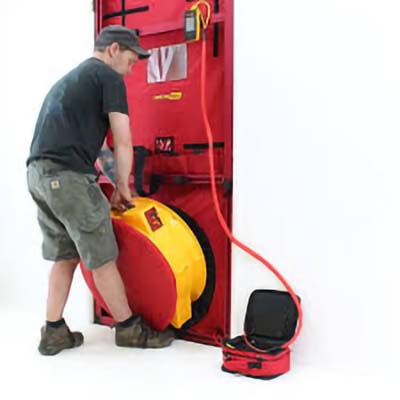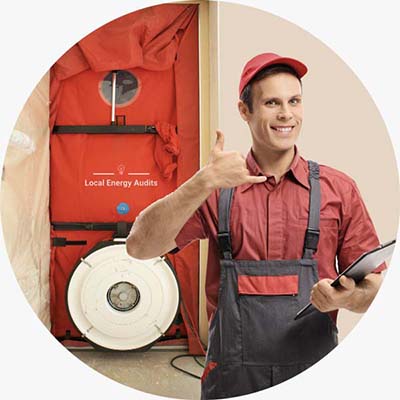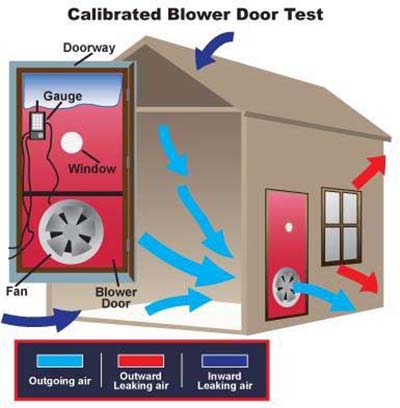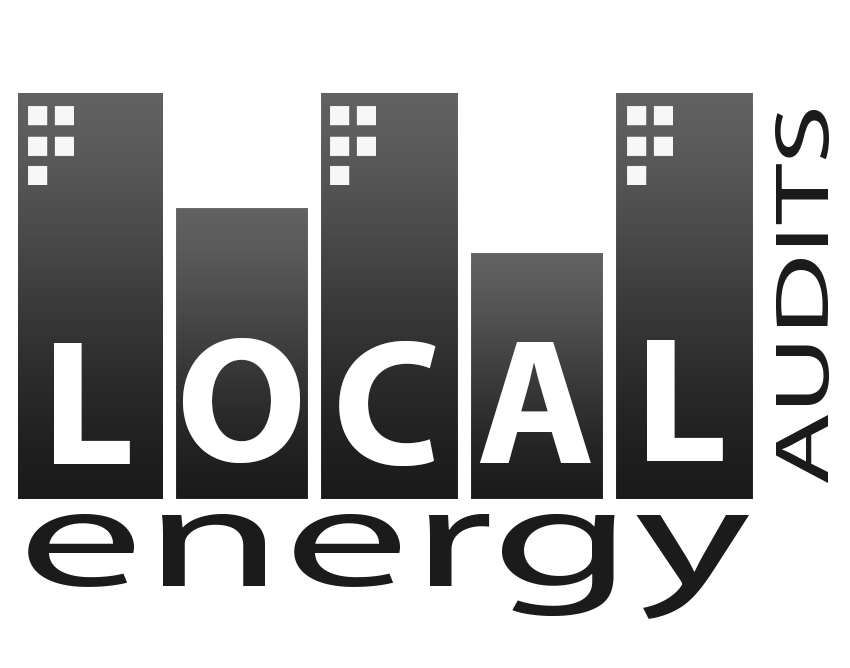Blower Door Test in Malone, TX | Certified Energy Testing
If you’re constructing a new home or multi-family dwelling in Malone, TX, you’ll likely require a blower door test to meet the 2018 International Energy Conservation Code (IECC) standards.
We specialize in blower door and duct leakage testing, performed by certified energy testers, to ensure your project adheres to Texas energy code standards. Our specialists excel in detecting air leakage problems that impact energy efficiency, indoor air quality, and heating and cooling expenses. If you’re a builder, contractor, or homeowner, we provide reliable, affordable, and certified blower door testing in Malone, TX, and surrounding regions.

What Is a Blower Door Test?
- Energy efficiency – Homes with poor insulation waste energy, leading to costly utility bills.
- Indoor air quality – Homes with air leaks may experience an influx of allergens and outdoor pollutants.
- HVAC performance – Air leakage forces HVAC systems to work harder.
- Comfort levels – Too much air leakage results in temperature instability and drafts.
How Does a Blower Door Test Work?
A mounted fan on an exterior door is used in a blower door test to manipulate air pressure inside and outside a home. A pressure gauge determines the rate at which air enters through small openings, cracks, and leaks in a home. When a home has significant air leaks, sealing gaps and upgrading insulation may be necessary.

Do You Need a Blower Door Test in Malone, TX?
The 2018 IECC mandates a blower door test for all newly constructed residential properties in Malone, TX to meet energy efficiency guidelines.
You may also need a blower door test if:
✔ You’re constructing a new home and must pass the final energy inspection.
✔ Your energy bills are high and you suspect excess air leakage.
✔ You experience drafts, uneven heating, or poor indoor air quality.
✔ You are applying for an energy efficiency rebate or certification.
When a blower door test is required for your home or project, our team ensures quick scheduling, immediate results, and full energy code compliance certification.

Texas Energy Code Requirements for Blower Door Testing
The 2018 IECC requires homes in Texas to achieve the following air tightness performance levels.
- 3-5 (Air Changes Per Hour at 50 Pascals) depending on location.
- Homes exceeding this air leakage limit may require additional air sealing measures.
If an air handler, ductwork, or other HVAC components are outside the conditioned space, a duct leakage test must also be performed.
Our Blower Door Testing Process
Booking a blower door test in Malone, TX, ensures our certified technicians will follow a strict step-by-step procedure for compliance:
Step 1: Preparation
- All windows and doors are securely closed.
- HVAC systems and exhaust fans are turned off.
- A blower door fan is installed in the main entryway.
Step 2: Conducting the Test
- The blower door fan reduces indoor pressure to mimic real-world air infiltration patterns.
- State-of-the-art digital meters measure infiltration rates and locate areas of leakage.
Step 3: Test Report & Certification
- An extensive blower door test report is prepared to ensure compliance with energy standards.
- When air leakage issues arise, we provide solutions to ensure your home meets standards.
We provide a quick, professional, and seamless process to keep your project on track.

Why Choose Us for Blower Door Testing in Malone, TX
When you trust our team for blower door testing in Malone, TX, you can expect:
✔ Certified Energy Experts – Fully licensed and trained professionals.
✔ Fast Scheduling – We work around your project timeline.
✔ Same-Day Results – Receive a certified test report immediately.
✔ Affordable Rates – Competitive pricing with no hidden fees.
✔ Duct Leakage Testing Available – One-stop compliance for all Texas energy codes.

Schedule Your Blower Door Test in Malone, TX Today!
Looking for a blower door test in Malone, TX? We ensure a smooth and hassle-free process. Contact us today to book your test and verify that your project meets Texas energy requirements.



